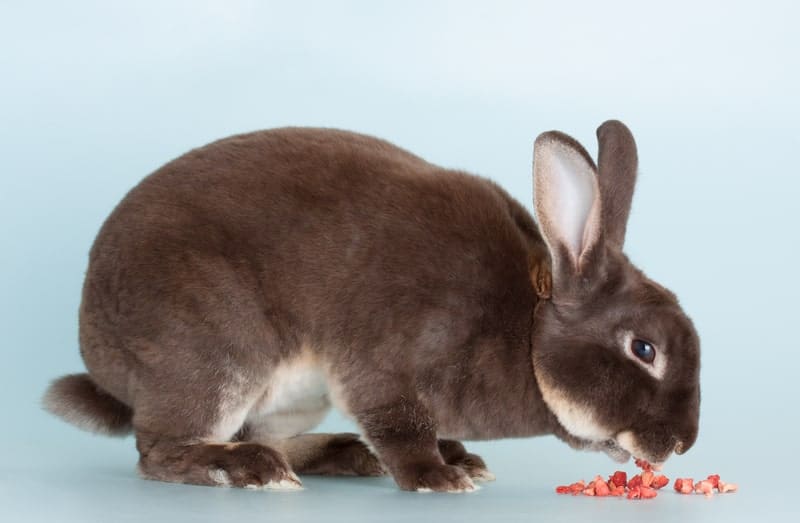
Cattle drives of centuries past saw cows travel up to 25 miles a day across the great plains of North America, which was undoubtedly tiring for their feet. Today’s modern cows also spend a great deal of time on their feet, though thankfully cows have a tough, outer layer to help them withstand the daily demands of cattle life.
Cows have hooves instead of feet and this hard outer surface is there to protect the bone, nerves, and blood vessels contained within. Cattle evolved to have hooves as it provides good traction for traveling across different terrain, making them perfectly adapted to the elements and their pasture environment.
If you are raising cattle on your farm or homestead, it is important to learn as much as you can about their hooves. Cow hooves need to be trimmed just as fingernails do and properly maintained for their comfort and to prevent certain health issues. Let’s answer some of the common queries about hooves that you may find helpful.
- What Kind of Hooves Do Cows Have?
- Why Do Cows Have Hooves Instead of Feet?
- What are Cows Hooves Used for?
- What are Cows Hooves Made of?
- What Causes a Cows Hooves to Grow Long?
- What Causes Cows Hooves to Crack?
- Do Cows Shed Their Hooves?
- Do Cow Hooves Grow Back?
- Do Cows Feel Pain in Their Hooves?
- What Color are Cows Hooves?
- Are Cows Hoofed Animals?
- Why are Cows' Hooves Trimmed?
- How Often Do Cows Need Their Hooves Trimmed?
- How Long Does It Take to Trim a Cow's Hooves?
- How Much Does It Cost to Get Cows' Hooves Trimmed?
- Does Hoof Trimming Hurt Cows?
What Kind of Hooves Do Cows Have?
Cows – like goats, sheep, and pigs – have cloven-hooves, which means their feet are split down the middle like a cloverleaf and consist of two separate toes or ‘claws’ as they’re known.
Why Do Cows Have Hooves Instead of Feet?
Cows evolved to have cloven hooves instead of feet because it benefits them when walking or running over different types of terrain. It also offers them greater protection than a soft, fleshy paw or other foot types would as this can be more prone to infection. A hoof also provides a large surface area to support a cow’s vast build and body weight.
What are Cows Hooves Used for?
The size and structure of a cow’s hoof firstly benefit the cow by providing a wide surface area for better traction on rough terrain, absorbing the impact of striking the hard ground when they run to prevent injury, and to support their body weight.
Due to a common manufacturing process known as ‘rendering’ (which boils hooves to pull the fat out), cow hooves are also used in the making of things like pet food and gelatin as well as products such as glue, lubricants, soaps, fertilizer, buttons, handles, and even the foam in fire extinguishers!
What are Cows Hooves Made of?
A cow’s hooves are made from a protein called keratin, which is the same thing that human hair and fingernails are made of. This gives their hooves a very durable but sensitive structure that is capable of growing just as hair or nails can.
What Causes a Cows Hooves to Grow Long?
Cow’s hooves should normally grow around 2 inches per year, but if their hooves are growing longer than usual, this is usually down to an excessive intake of energy in their diet. Too much energy can come from over-feeding them grain or giving them the wrong type of forage for their needs or age.
Overgrown hooves must be trimmed as soon as possible to prevent them from becoming deformed and painful for the cow to walk on. Without the right care and attention, overgrown hooves can cause lameness in your cows.
What Causes Cows Hooves to Crack?
Cracked hooves are fairly common in cows living in cold or dry regions. Their hooves can also become dry and brittle in the winter because the hoof has a lower moisture content compared with the summer months.
Cracked cow hooves can also be caused by a nutrient and mineral deficiency in their diet, but this can be remedied with mineral supplements and providing them with high-quality forage.
Do Cows Shed Their Hooves?
No, cow hooves don’t naturally shed like the skin of some animals, they just give the appearance of shedding when they become overlong and break off at the tip. This is a sign they need trimming.
Do Cow Hooves Grow Back?
This depends on whether the hoof has been severely damaged or not. A healthy cow hoof will regrow a small amount in between trims.
However, if the hoof has suffered a deep trauma such as being torn off at the point of the coronary band (the hairline area where growth begins), this may be permanently damaged and regrowth of the hoof may not be possible.
Do Cows Feel Pain in Their Hooves?
Yes, cows can sense pain in their hooves as their hoof has sensitivity equivalent to the “quick” portion of a human fingernail (this is the seal of tissue in between the nail and skin protecting the nail bed). So they will feel a degree of pressure and discomfort if the hoof were to suffer a trauma.
What Color are Cows Hooves?

The color of a cow’s hoof depends on the breed. One of the most common breeds of beef cattle in the US – the Black Angus cow – has black-colored hooves, but some breeds can have white or horn-colored hooves, brown, gray, tan, or red.
Are Cows Hoofed Animals?
Yes, cows are hoofed animals and specifically cloven-hoofed animals like other farmyard cattle. They do not share the solid, round structure of a horse’s hoof, but rather a split hoof design which gives them better traction and grip on rough terrain than a single hoof.
Why are Cows’ Hooves Trimmed?
It is important that cow hooves are trimmed to prevent lameness in the herd. Lameness in cows can be caused in one of two ways – firstly, a structural lameness due to an overgrowth of the hoof which results in pain and difficulty walking, and secondly, a bacterial lameness or bovine ‘foot rot‘ which is an infection caused by a build-up of bacteria between the toes of the hoof.
A well-maintained hoof that is properly monitored for cracks and signs of a weakened stricture will make cows less vulnerable to the bacteria found in their manure and general living environment.
How Often Do Cows Need Their Hooves Trimmed?
Normally, adult cows should have their hooves trimmed every 6 months, although some cows may need their hooves trimmed more regularly such as older cows (around 8-10 years old), cows with mobility issues, and those suffering from foot rot and similarly painful abscesses.
For some cows – such as those in herds with wide-spread grazing – hoof trimming may not always be necessary since their hooves can wear away at a rate that combats the growth. Also, younger cows will not require hoof trimming until they have fully developed around 3 years of age, though you should consult your veterinarian as to when hoof maintenance will be needed.
How Long Does It Take to Trim a Cow’s Hooves?
This can depend on whether you are trimming dairy or beef cows as they differ in size. It will also depend on whether your cattle size is micro, miniature, mid-size, or standard (between 36 and 62 inches tall). On average though, trimming a cow’s hooves should take around 10-15 minutes per cow.
How Much Does It Cost to Get Cows’ Hooves Trimmed?
Professional hoof trimmers can charge around $10-$25 per cow, whilst veterinarians may charge more if they are correcting a damaged hoof.
For novice cattle farmers, hoof-trimming is best left to the professionals to ensure against complications from incorrect trimming. Once you have sufficient experience and training in trimming the hooves of smaller cattle such as goats and pigs, you may try trimming cow hooves yourself under supervision.
Does Hoof Trimming Hurt Cows?
No, trimming their hooves shouldn’t be painful at all – think of it like getting your fingernails trimmed! The only instance in which hoof trimming would cause them pain is if the hooves are trimmed incorrectly, such as trimming too close to their coronary band or causing an unlevelled effect which may cause them discomfort while walking.
You Might Also Like:
- Do Cows Have Horns? (Explained, Why, Breeds and Facts)
- Why Do Cows Eat Grass? (Explained, Facts and Answers)
- Can Cows Swim? (How, How Far and Do Cows Like to Swim)
- Why Do Cows Lick Salt? (Explained and Healthy Salt Types)
- Why Do Cows Moo? (Explained a Few Reasons and Related Facts)
Mike is the Founder of Familylifeshare. Mike is well-knowledged in marriage, parenting, dogs, blogging and committed to sharing his knowledge and expertise with his readers. Know more about Mike from here.


